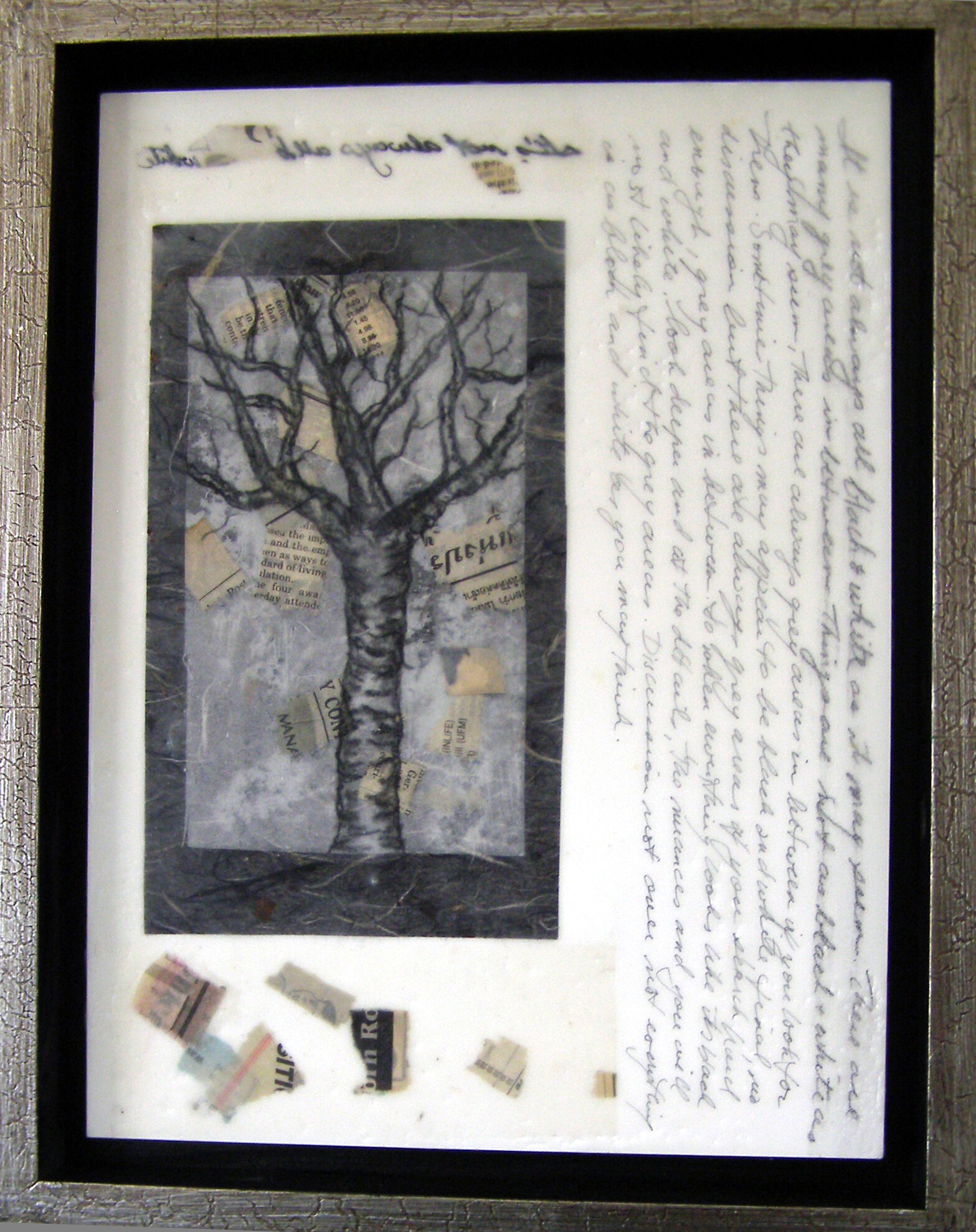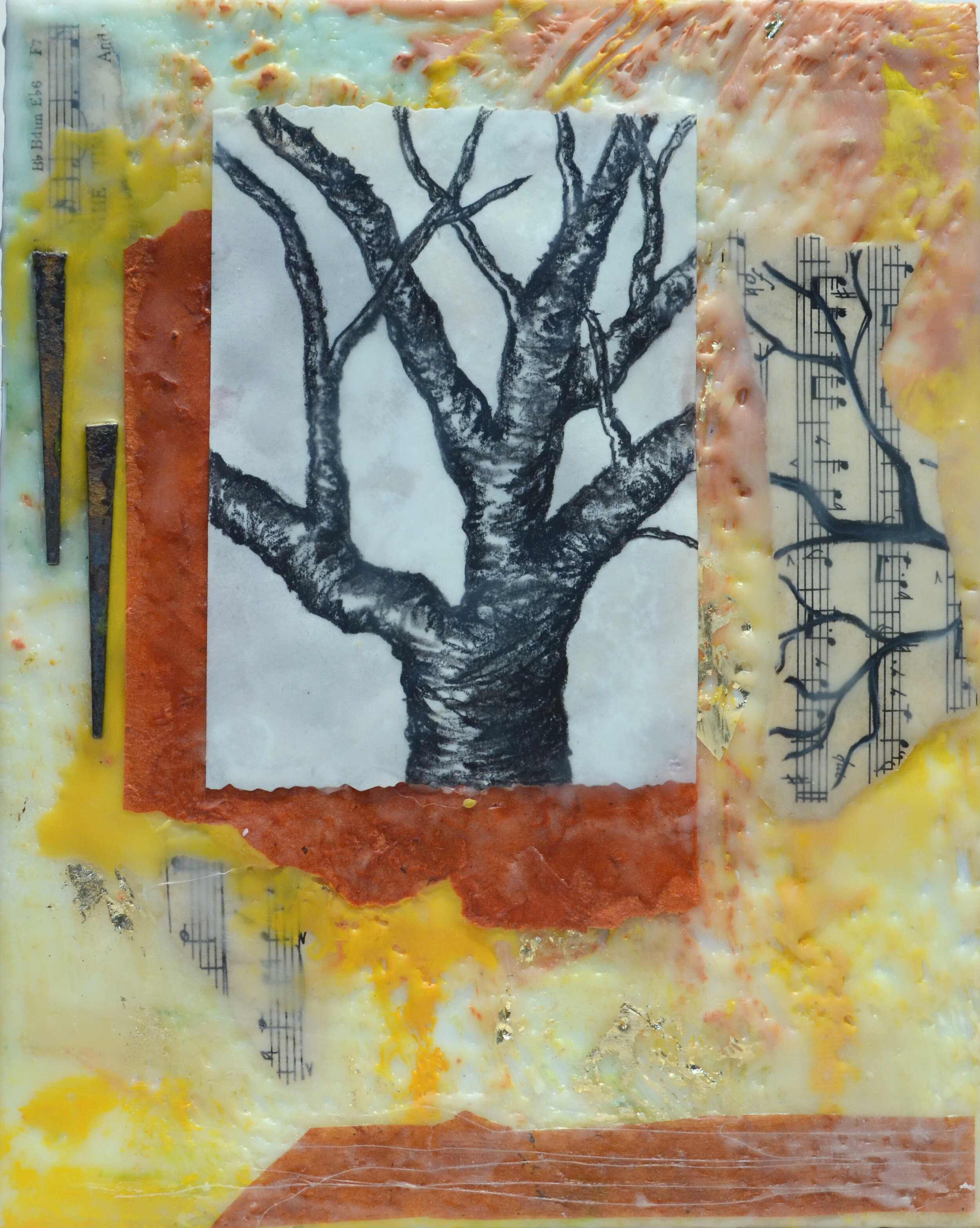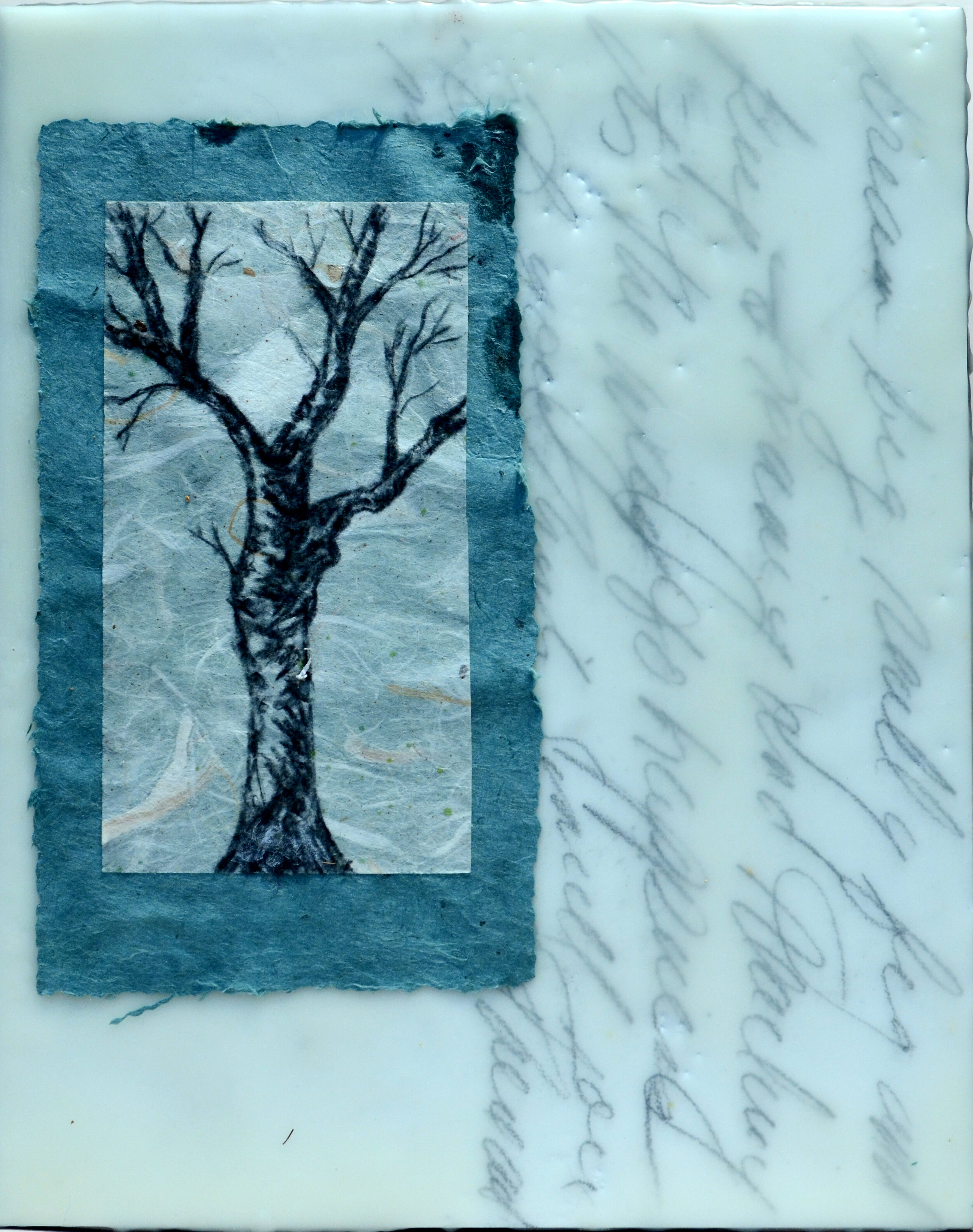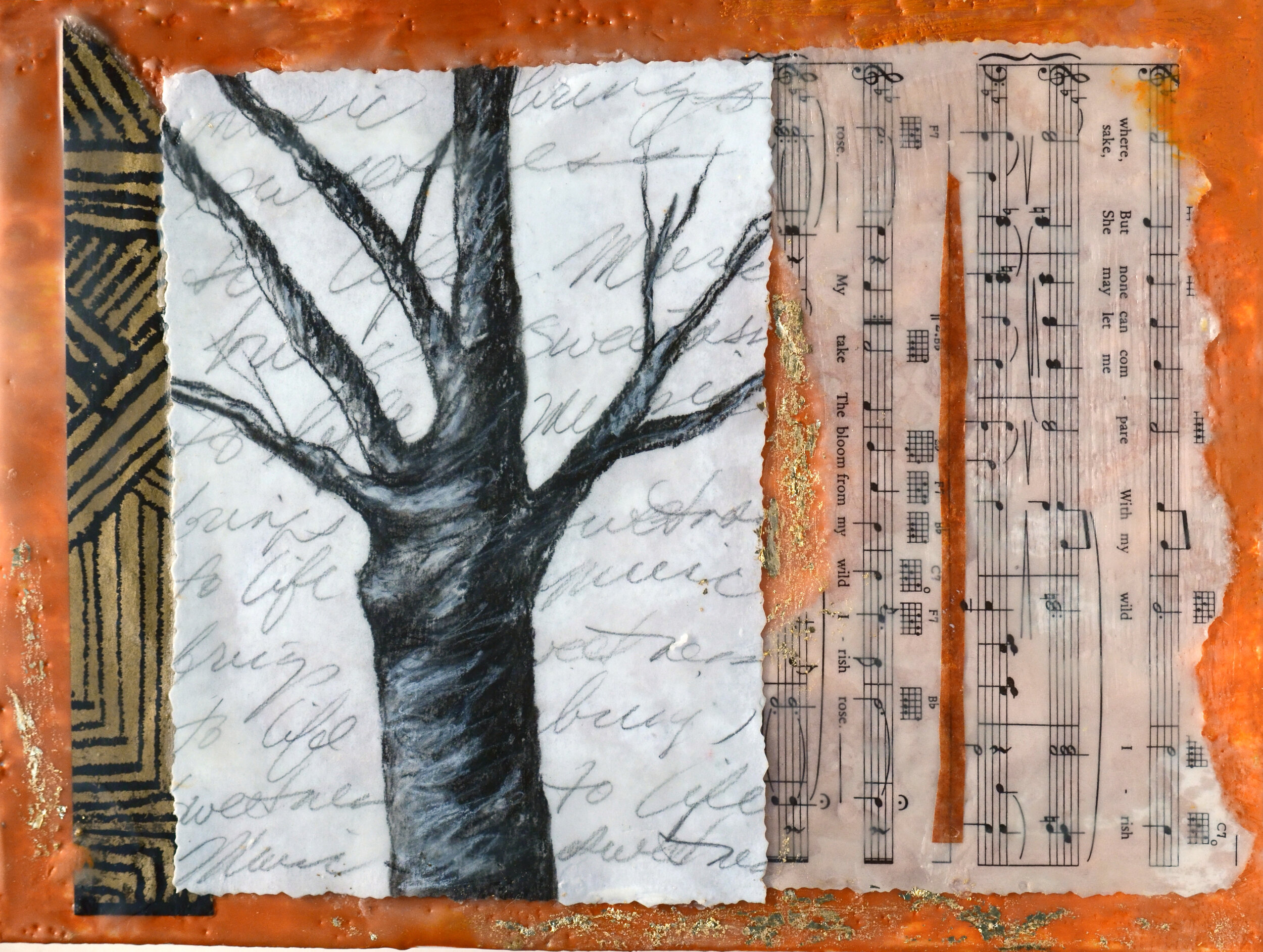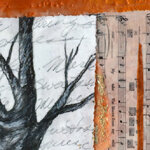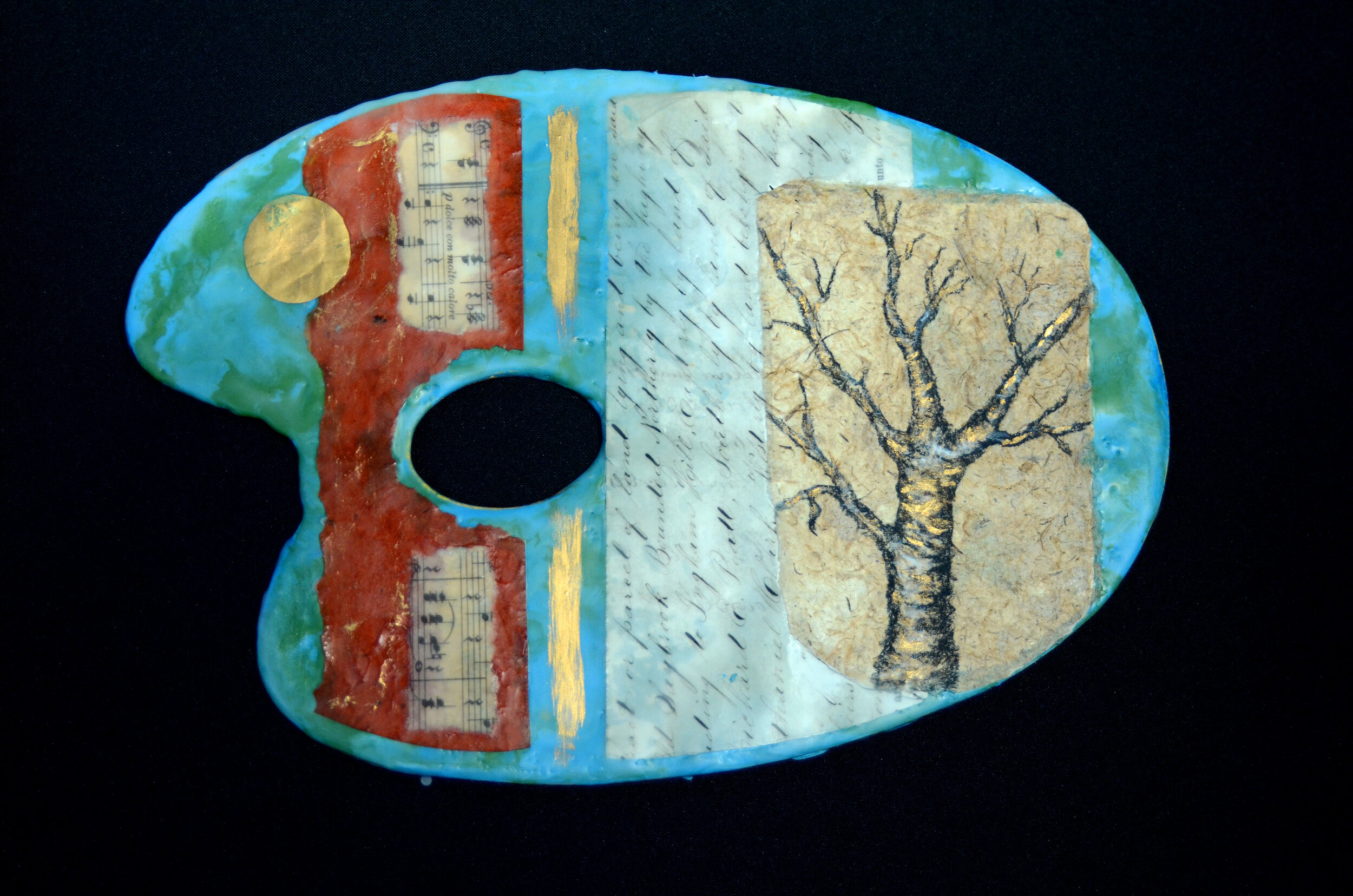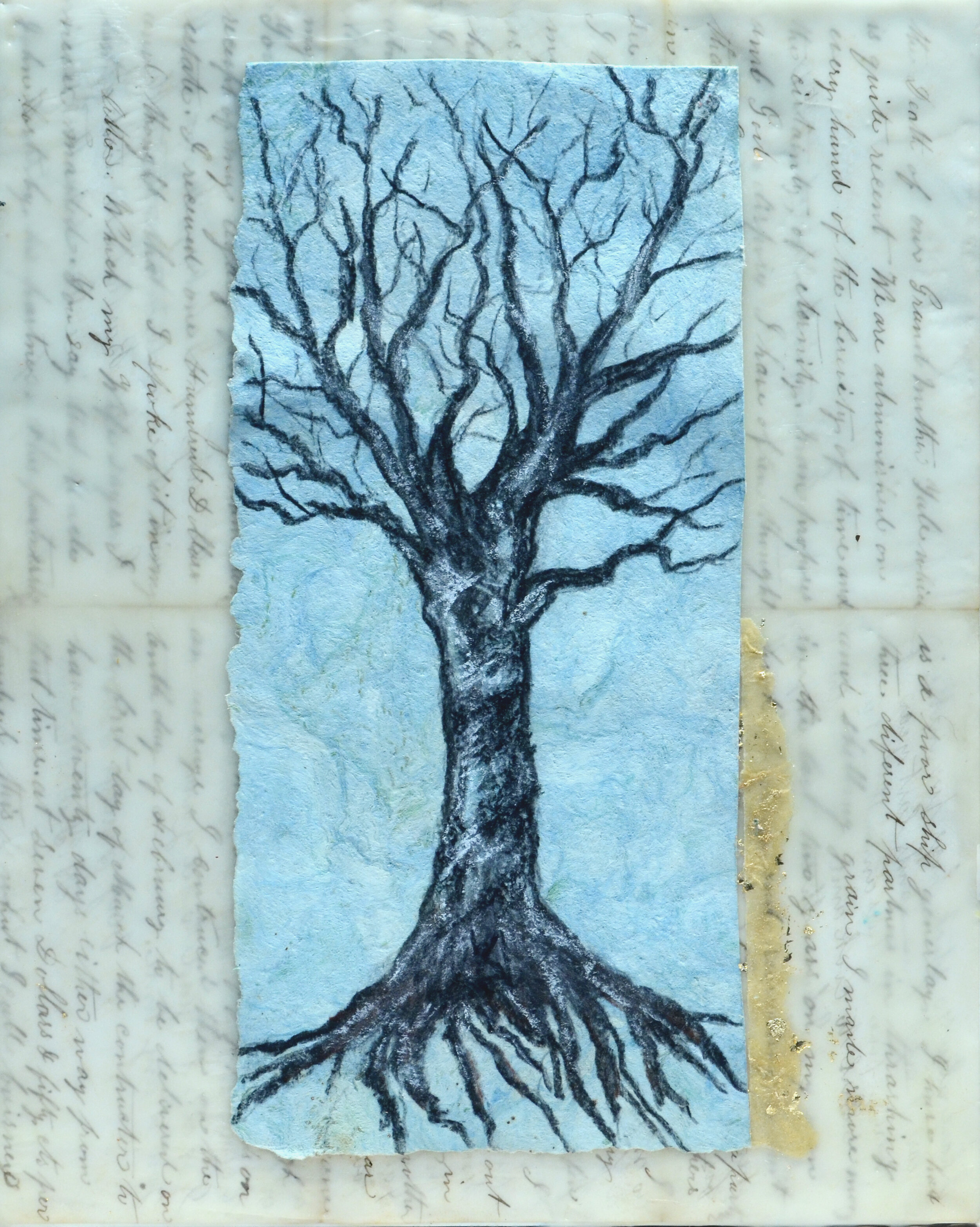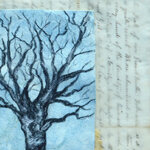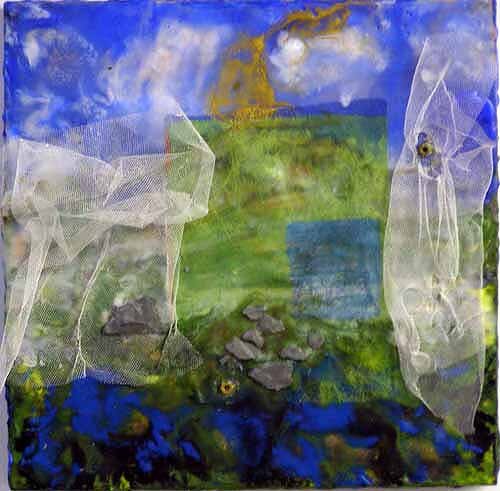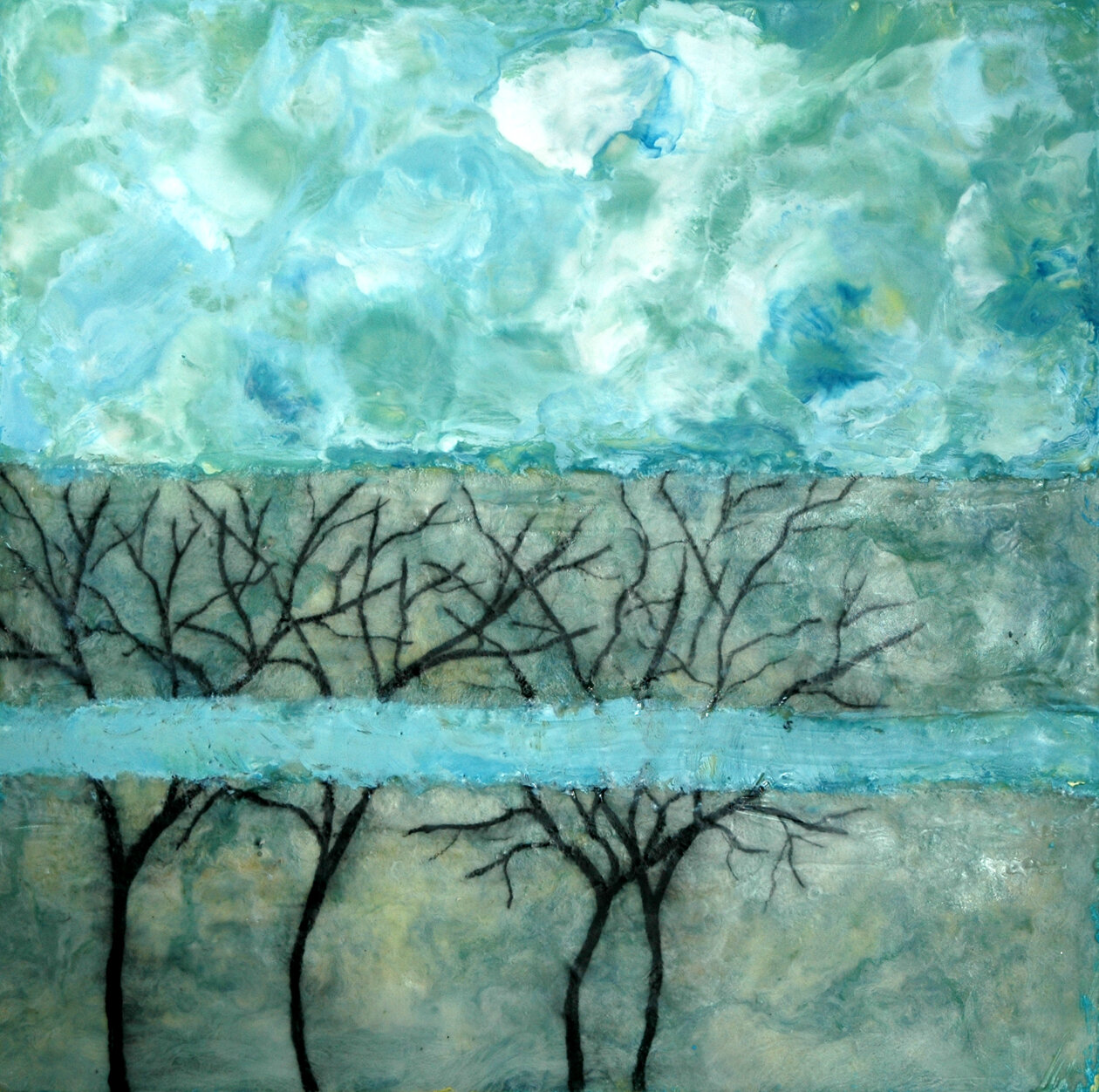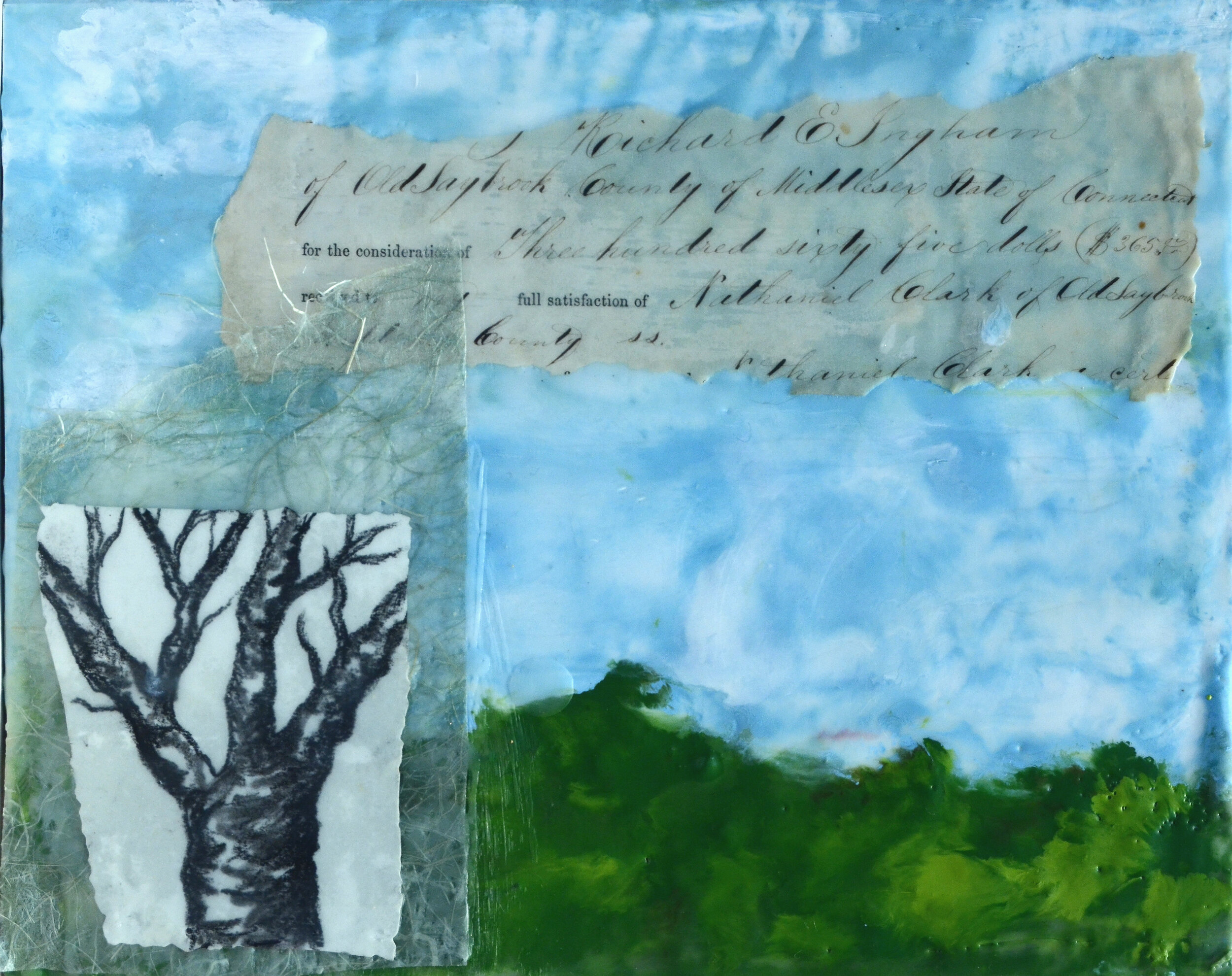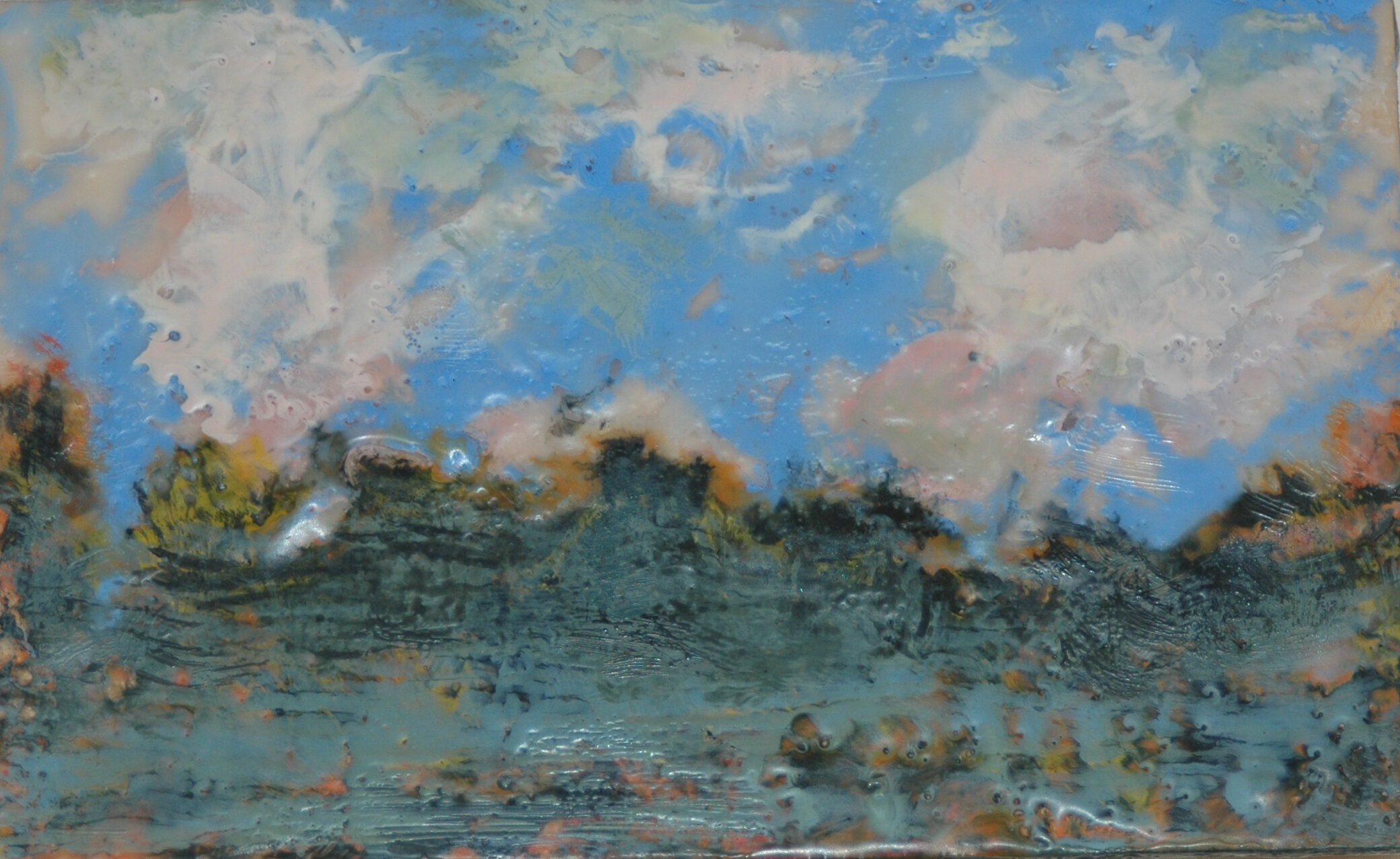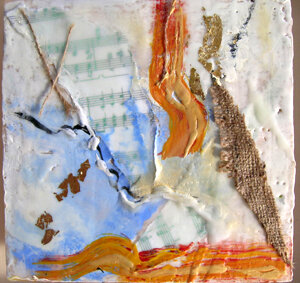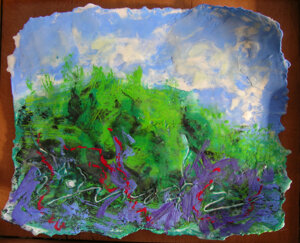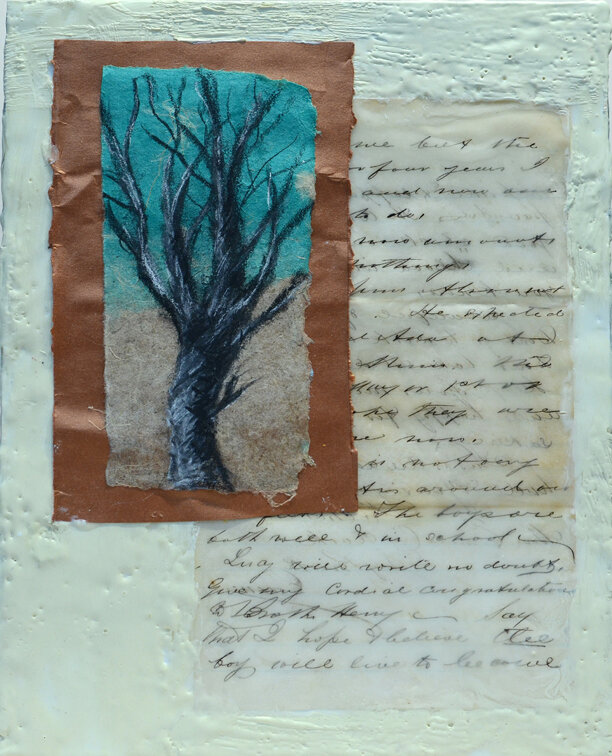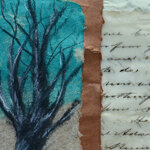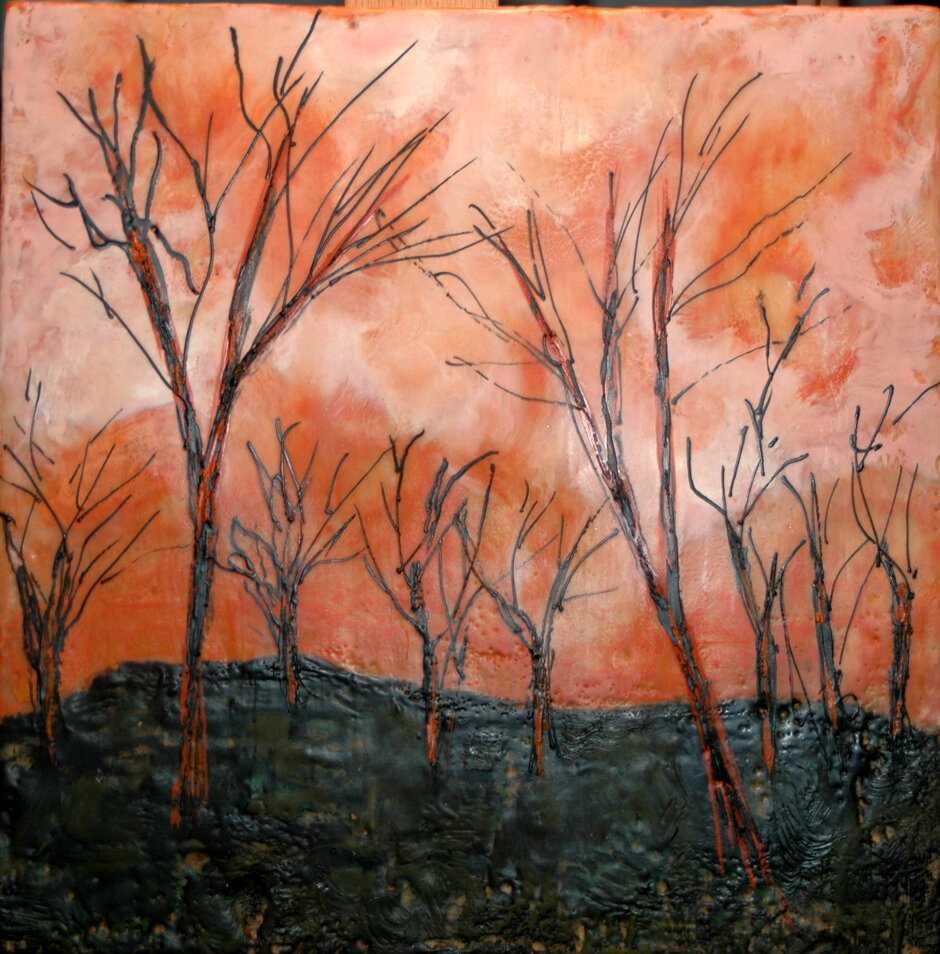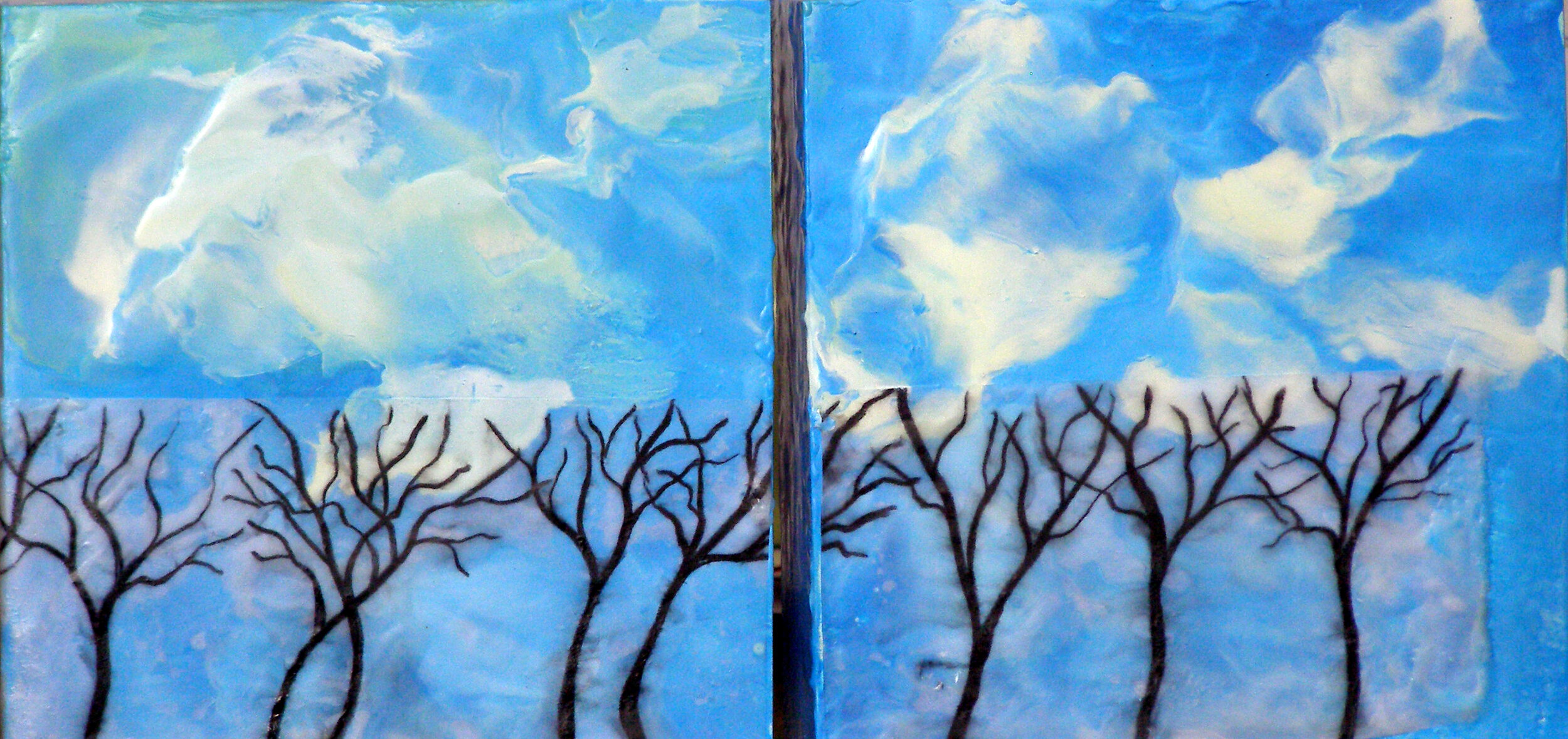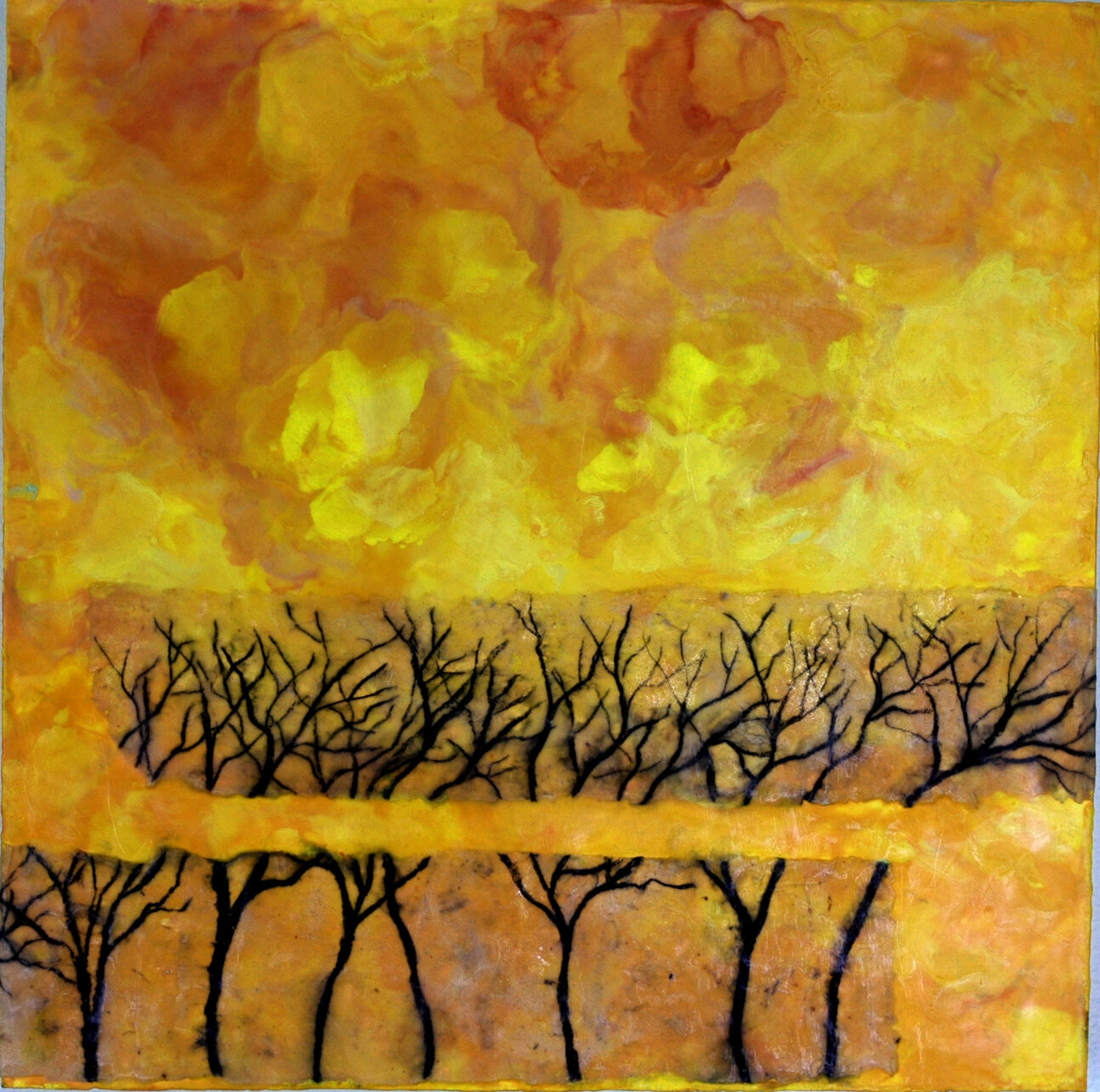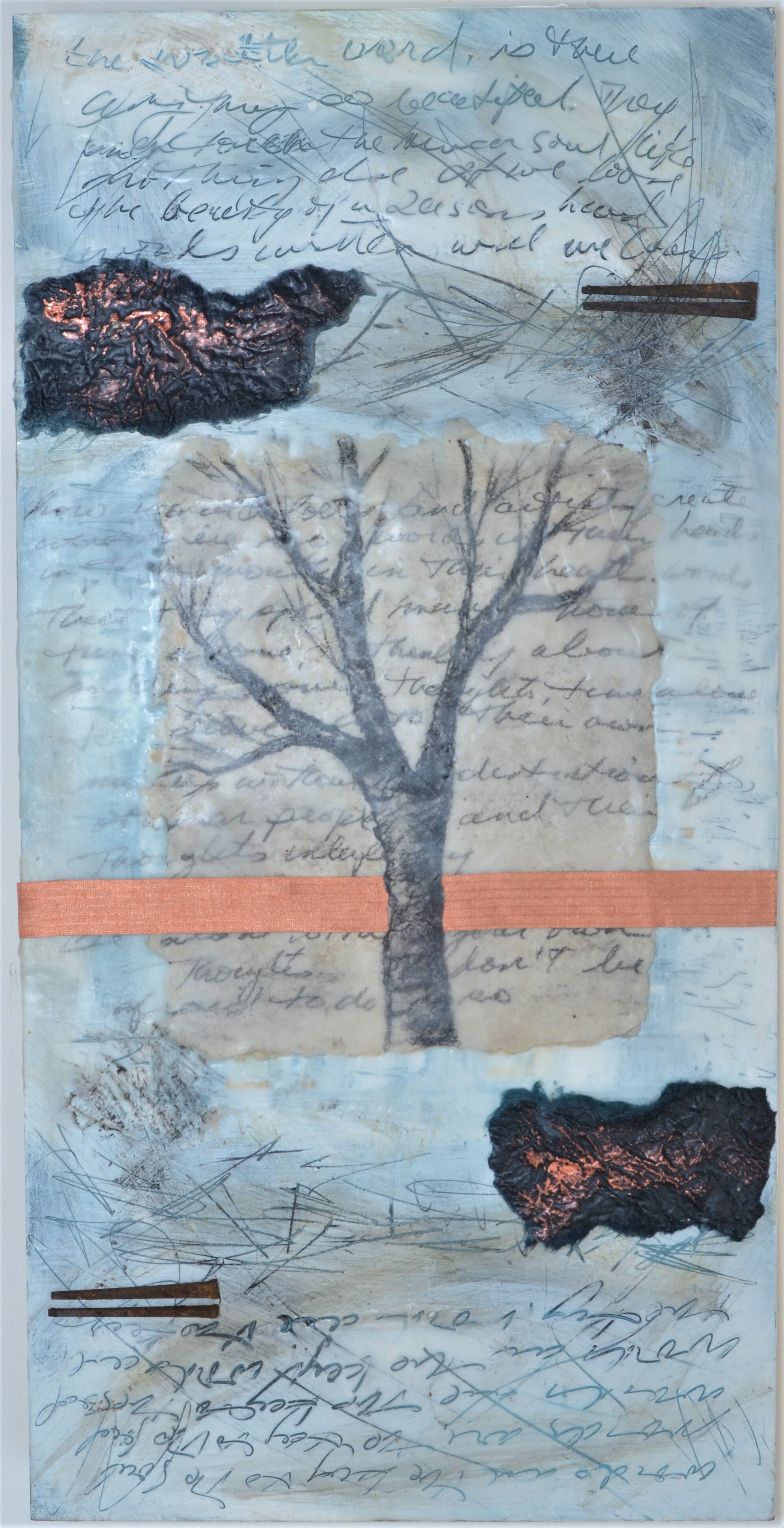Encaustics
A brief description of Encaustic technique
Encaustic is a method for painting with molten wax first used by ancient Greek and Roman artists. The word “encaustic” comes from the Greek term “enkaustikos” meaning “to burn in”.
Encaustic is made from refined beeswax, dry pigment and a small percentage of damar resin. The artist melts the solid blocks of encaustic on a heated palette set to approximately 200ºf. She then brushes, dips or pours the paint onto a panel or canvas, then re-heats the surface of the painting in a process called fusing. The fusing bonds the paint to the layer below and melds it into a uniform film. Artistically, fusing creates the exquisite surface qualities for which encaustic is known. When the painting is complete, it can be buffed to bring out the full luster of the paint.
Encaustic paintings are extremely durable. The Fayum portraits of the 1st and 2nd centuries, AD (Roman) have not only survived thousands of years; they have also maintained a freshness and intensity of color that, by all standards, is remarkable.
*Encaustic description adapted from Waxing Poetic, Encaustic Art in America, by Gail Stavitsky with essays by Danielle Rice and Richard Frumes”
